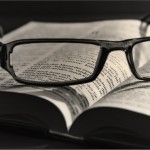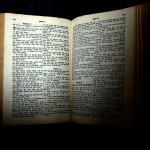Gog and Magog are two biblical figures with a long interpretative history. Like Adam, Abraham, Melchizedek, and others from the Hebrew biblical tradition, Gog and Magog’s mysterious character make them ripe for expanded interpretation. This essay reflects very briefly on some of these traditions. Though I remain agnostic about why these figures did not receive greater attention in early Mormonism, I suggest that traditions about them can help Mormons better understand our own traditions about other biblical figures. Such figures can be cast in particular narratives to tell some truth about the present.
Magog is listed as one of the sons of Japheth in Genesis 10:2. Gog is listed as a descendant of Reuben (eldest son of patriarch Jacob) in 1 Chronicles 5:3-4. Such names often reflected ancient names for tribes as early Israelite mythology attempted to trace the origins of different peoples. Other than appearing in lists of names, these figures are not elaborated on at all.
In somewhat later traditions, Ezekiel actually reflects quite a bit on these figures. He pronounces long oracles against Gog and Magog in chapters 38-39.
Son of man, set thy face against Gog, of the land of Magog, the prince of Rosh, Meshech and Tubal, and prophesy against him. And you shall say; So said the Lord God: Behold, I am against you, Gog, the prince of Rosh, Meshech and Tubal. Ezek 38:2-3
Here, Gog is a human being and Magog is a place. This eschatological battle describes a war between God and the people of God, resulting in a divine victory. At the end of this triumph of God, his people share in a divine feast (Ezek 39:17-20). The exile, battle, and victory are all demonstrations of God’s power to the nations (Ezek 39:28-29).
In Rev 20:7-10, this eschatological battle appears again. (Rev is working with Ezek frequently as a source for themes and imagery). Gog and Magog, perhaps two people, besiege the holy people and the holy city. Again, God miraculously rescues them in this battle.
The mythology of Gog and Magog identifies these figures with numerous historical people and places. That they are associated with a people or land from the “north” has led to several speculations. Orthodox Christians identified them with Arian Gothic tribes invading Roman territory. Later, the church identified the Mongol invasion as fulfilling these prophesies. In some 19th and 20th c. Islamic traditions, these figures are associated with European nations. In evangelical circles, especially during the Cold War, Gog and Magog were figured as various communist countries or leaders. Such a view was particularly influential on neo-orthodox Mormon approaches to the Bible, most notably Bruce R. McConkie.
While other biblically obscure but historically productive biblical figures, like Enoch and Melchizedek, receive extensive interpretation and elaboration in LDS texts and tradition, by contrast Gog and Magog do not, at least not in any distinctive way from Cold War conservative dispensationalist theologies. Neither name appears in LDS scripture.
Perhaps this absence is best explained historically, either through a early 19th c. lack of reflection on Gog and Magog in broader American religious circles. Or, perhaps I am unaware of early LDS engagement with these figures. I leave those questions to the historians. I am interested in an interpretative question.
It seems clear to contemporary observers when looking at various identification and engagement with the Gog and Magog biblical traditions that later interpreters saw in Gog and Magog an account of their own situation. Invariably, Gog and Magog were understood as outside invaders threatening the righteous people of God. The best way to approach this fact is not to determine who was right, that the Goths or Mongols or Russians really were or really weren’t Gog and Magog, but rather to reflect on the tendency to see the scriptures as our own story. These historical examples tell us more about the world views, pressures, and eschatological fears of the people invoking Gog and Magog to tell their story than they tell us any facts about these mythical figures.
Unfortunately, I believe that this interpretative framework is often ignored in LDS discussions of Adam, Abraham, Enoch, Melchizedek, etc. This is not only true of analysis of LDS canonical accounts of such figures, but especially of LDS analysis of non-canonical accounts (as the proliferation of LDS collections of these texts suggests). Such studies often proceed as if we will be able to validate some historical fact about these figures, rather than beginning from the supposition that such later interpretations, like the original, are not rooted in objective history, but in using these figures to say something about the times in which the texts were produced. Ironically, the reason that we are interested in these figures is precisely because we think they will tell us some truths about the present. We have nothing to fear from historicist accounts of ancient or modern retellings of stories about biblical figures. Instead, we can benefit greatly by better understanding what these stories meant, and how they continue to find meaning to modern readers.











